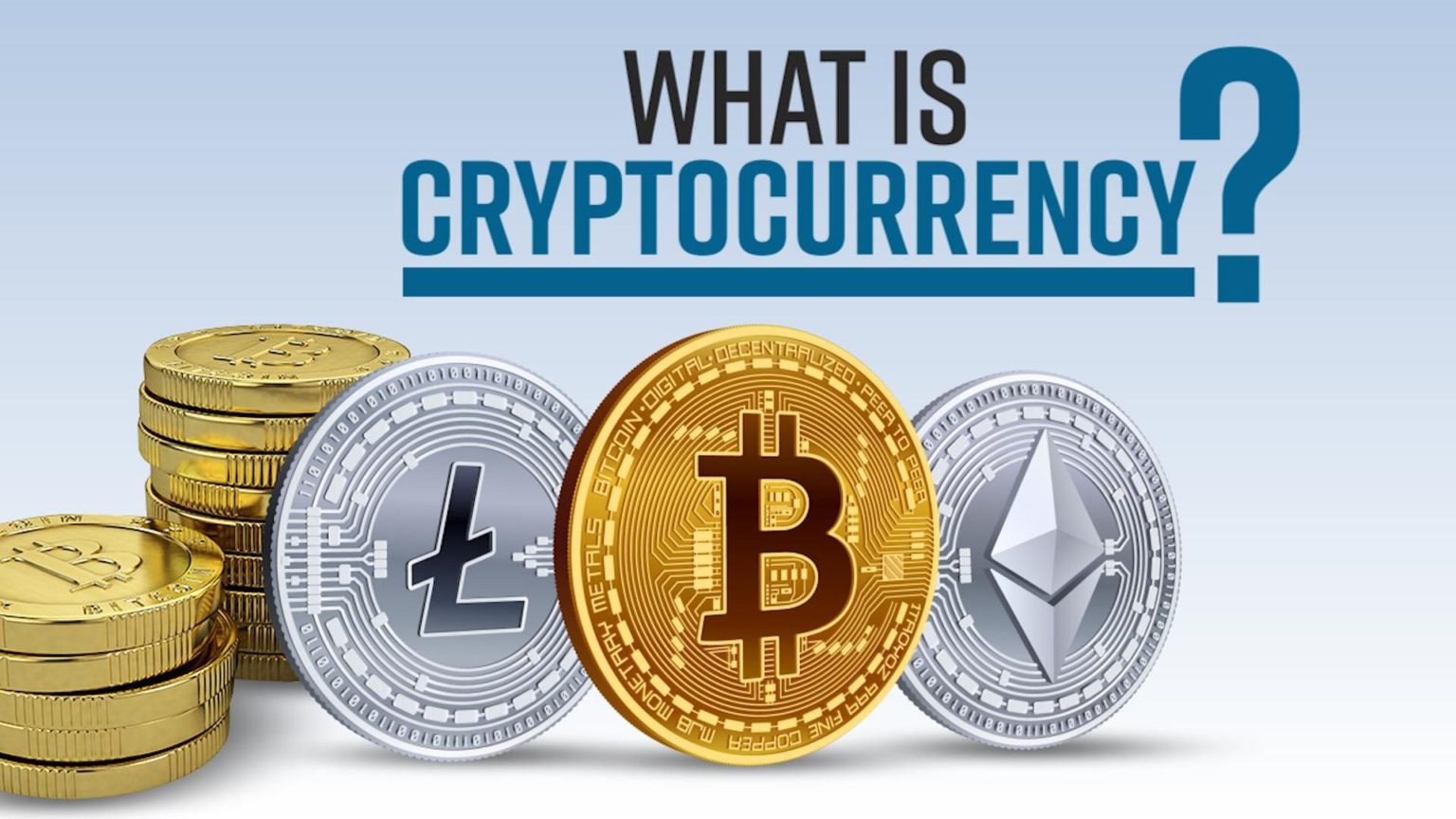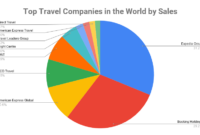Senior travel companies cater to a growing and diverse market segment. Understanding the unique needs and preferences of senior travelers is crucial for success in this sector. This guide explores the various types of companies, their marketing strategies, the role of technology, ethical considerations, and future trends within the senior travel industry, offering insights into this increasingly important market.
From adventure tours tailored to specific fitness levels to relaxing cruises designed for comfort and accessibility, the options are plentiful. We’ll delve into the nuances of each segment, highlighting successful business models and exploring the technological innovations that are revolutionizing the senior travel experience.
Defining the Target Market for Senior Travel
The senior travel market is incredibly diverse, encompassing a wide range of individuals with varying needs, preferences, and financial capabilities. Understanding this diversity is crucial for travel companies seeking to effectively reach and cater to this significant demographic. Successful marketing and product development hinge on accurately identifying and targeting specific segments within this population.
Diverse Needs and Preferences within the Senior Travel Demographic
Senior travelers are not a monolithic group. Their needs and preferences vary greatly depending on factors such as age, health, mobility, interests, and financial resources. Some seniors prioritize relaxation and rejuvenation, seeking tranquil beach vacations or spa retreats. Others crave adventure and exploration, opting for active itineraries involving hiking, wildlife safaris, or cultural immersion experiences. Many seek opportunities for social interaction and connection, joining group tours or choosing destinations with vibrant social scenes. Accessibility considerations, including ease of transportation and accommodation, also play a significant role in travel decisions for many senior travelers. Furthermore, the importance of safety and security is paramount, influencing destination choices and preferred modes of travel.
Key Characteristics Differentiating Senior Travelers from Other Age Groups
Several key characteristics distinguish senior travelers from younger demographics. Firstly, their travel motivations often differ, shifting from adventure and exploration towards relaxation, cultural experiences, and connecting with family and friends. Secondly, their physical capabilities and health concerns may necessitate a more tailored travel experience, requiring accessible accommodations and transportation options. Thirdly, their financial resources and spending habits often differ, influencing their budget and the type of travel they choose. Finally, their travel planning processes may be more deliberate and involve greater consideration for safety and security.
Segmenting the Senior Travel Market
The senior travel market can be effectively segmented based on activity level, budget, and travel style. For instance, “active seniors” may prefer adventure tours, while “relaxed seniors” might opt for cruises or resort stays. Budget segmentation considers the spectrum from luxury travelers to budget-conscious individuals. Travel style can range from independent travel to guided tours, and from all-inclusive packages to customized itineraries. Understanding these segments allows for targeted marketing campaigns and the development of tailored travel products to meet specific needs and preferences.
Comparison of Travel Preferences Across Senior Age Sub-Groups
| Age Group | Preferred Destinations | Activity Levels | Budget Considerations |
|---|---|---|---|
| 60-70 | European city breaks, cruises, adventure tours (moderate intensity) | Moderate to high; enjoy active exploration but value relaxation | Mid-range to luxury; willing to spend on comfort and experience |
| 70-80 | Relaxing beach vacations, cultural tours (less strenuous), shorter trips | Moderate to low; prioritize comfort and ease of access | Mid-range to budget-conscious; may prioritize value over luxury |
| 80+ | Domestic destinations, assisted living facilities with travel options, shorter trips with minimal travel time | Low; prioritize comfort and accessibility | Budget-conscious; may prioritize affordability and accessibility over luxury |
Types of Senior Travel Companies and Services
The senior travel market is diverse, catering to a wide range of preferences and budgets. Understanding the different types of companies and the services they offer is crucial for seniors planning their next adventure. This section categorizes senior travel companies based on specialization and compares their unique offerings.
Categorization of Senior Travel Companies by Specialization
Senior travel companies can be broadly categorized based on their focus. This allows travelers to easily identify companies that align with their travel style and desired experiences.
- Adventure Travel Companies: These companies specialize in active and adventurous trips, often involving hiking, wildlife viewing, or exploring remote locations. They typically cater to seniors who are physically active and enjoy challenging experiences. Examples might include treks in the Himalayas tailored for seniors or kayaking expeditions in calmer waters.
- Cruise Lines: Many cruise lines offer itineraries and amenities specifically designed for senior travelers, including accessible cabins, shore excursions suited to various mobility levels, and onboard activities tailored to older adults. The convenience and all-inclusive nature of cruises make them a popular choice.
- Escorted Tour Operators: These companies organize group tours with a dedicated tour guide who handles logistics, provides historical and cultural context, and ensures a smooth travel experience. This is ideal for seniors who prefer a structured itinerary and the camaraderie of group travel. Tours might range from historical city explorations to scenic train journeys.
- All-inclusive Resort Companies: These companies offer packages that include accommodation, meals, and activities at a resort. This is particularly attractive to seniors seeking relaxation and convenience, with everything included in one price. Many resorts offer wellness programs and spa services geared towards older adults.
Comparison of Services Offered by Different Types of Senior Travel Companies
The services offered vary significantly across different types of senior travel companies. Understanding these differences is crucial in selecting the right fit.
| Type of Company | Services Offered | Unique Features |
|---|---|---|
| Adventure Travel | Guided hikes, wildlife safaris, specialized equipment, experienced guides | Focus on physical activity and exploration of unique destinations. Often smaller group sizes. |
| Cruise Lines | Accommodation, meals, onboard entertainment, shore excursions, transportation between ports | All-inclusive packages, variety of itineraries, accessible options available. |
| Escorted Tour Operators | Transportation, accommodation, guided tours, meals (sometimes), entrance fees to attractions | Structured itineraries, expert guidance, group camaraderie. Reduced planning and logistical burden for the traveler. |
| All-inclusive Resorts | Accommodation, meals, resort activities (pools, spas, entertainment), some transportation | Relaxation and convenience. Everything is typically included in one price. Often cater to specific interests like golf or wellness. |
Unique Selling Propositions of Each Category
Each type of senior travel company emphasizes different aspects to attract its target market.
- Adventure Travel: Unique experiences, physical challenge, connection with nature.
- Cruise Lines: Convenience, all-inclusive packages, variety of destinations, onboard amenities.
- Escorted Tour Operators: Stress-free travel, expert guidance, group interaction, structured itineraries.
- All-inclusive Resorts: Relaxation, convenience, value for money, specialized amenities.
Decision-Making Flowchart for Choosing a Senior Travel Company
The following flowchart illustrates a simplified decision-making process. It should be adapted to individual needs and preferences.
A visual representation would be beneficial here. The flowchart would begin with a central question: “What kind of travel experience are you seeking?” Branches would lead to different categories (Adventure, Cruise, Escorted Tour, All-inclusive Resort). Each category would then have further branching questions based on factors such as budget, desired level of activity, preferred travel style (independent vs. guided), and desired level of comfort and luxury. The final branches would lead to specific company recommendations based on the answers to the preceding questions.
Marketing and Branding Strategies for Senior Travel Companies
Marketing to senior travelers requires a nuanced approach, understanding their unique needs, preferences, and communication styles. Effective strategies must build trust, address specific concerns, and resonate with their life stage and aspirations. This involves selecting the right channels, crafting compelling brand messaging, and fostering a sense of security and reliability.
Effective Marketing Channels for Reaching Senior Travelers
Reaching senior travelers necessitates a multi-channel approach that leverages both traditional and digital methods. While online presence is crucial, print media still holds significant influence within this demographic. Direct mail marketing, for instance, allows for personalized messaging and high-quality visuals, appealing to those who may be less comfortable navigating the digital world.
- Print Media: Newspapers (especially those with lifestyle sections targeting mature audiences), magazines (travel publications, retirement-focused magazines), and brochures remain highly effective. High-quality print materials provide a tangible experience, fostering trust and allowing for detailed information presentation.
- Online Advertising: Targeted online advertising on websites and platforms frequented by seniors, such as AARP or specific interest-based sites, can deliver precise messaging. This includes display ads, search engine marketing (SEM), and carefully curated social media advertising.
- Social Media: While some seniors may not be active on all platforms, Facebook and Instagram offer opportunities to connect with this demographic. Content should be visually appealing, easy to understand, and focus on positive experiences and community engagement.
- Direct Mail Marketing: Personalized postcards, brochures, and catalogs sent directly to potential customers’ homes can be highly effective. This allows for a more personal touch and can include special offers or exclusive content.
- Partnerships: Collaborating with retirement communities, senior centers, and organizations catering to older adults provides access to a targeted audience and builds credibility.
Examples of Successful Branding Campaigns Targeting Senior Travelers
Successful branding campaigns for senior travel companies often focus on themes of adventure, rejuvenation, and connection. They showcase diverse travel experiences and highlight the emotional benefits of travel, such as fostering independence, creating lasting memories, and reconnecting with loved ones.
- “Rediscovering the World”: A campaign emphasizing the joy of exploring new places and experiencing different cultures, showcasing diverse travel options suitable for seniors’ physical capabilities.
- “Travel with Confidence”: A campaign focusing on safety, security, and ease of travel, highlighting features like accessible transportation, experienced guides, and 24/7 support.
- “Creating Lasting Memories”: A campaign that emphasizes the emotional benefits of travel, showcasing heartwarming stories of seniors enjoying enriching experiences with family and friends.
Strategies for Building Trust and Credibility with Senior Travelers
Building trust is paramount when marketing to seniors. Transparency, clear communication, and testimonials from satisfied customers are key. Presenting detailed itineraries, highlighting safety measures, and showcasing positive reviews from previous travelers will inspire confidence.
- Testimonials and Reviews: Featuring genuine testimonials from satisfied senior travelers builds social proof and demonstrates the quality of the services provided.
- Detailed Itineraries and Information: Providing clear, detailed itineraries that address potential concerns, including accessibility information and emergency contact details, enhances trust.
- Safety and Security Measures: Emphasizing safety protocols, travel insurance options, and readily available support services reassures senior travelers.
- Transparency and Clear Communication: Open and honest communication about pricing, inclusions, and potential limitations builds trust and avoids misunderstandings.
Compelling Brand Messages Resonating with the Emotional Needs and Aspirations of Senior Travelers
Brand messaging should appeal to the emotional needs and aspirations of senior travelers. Focus on themes of independence, adventure, connection, and legacy. Avoid language that infantilizes or stereotypes older adults.
- “Embrace Your Next Chapter”: Focuses on the exciting possibilities of retirement and travel.
- “Reconnect with Yourself and the World”: Highlights the self-discovery and rejuvenation aspects of travel.
- “Create Unforgettable Memories with Loved Ones”: Emphasizes the importance of family and connection.
- “Experience the World, Your Way”: Stresses the customization and accessibility of travel options.
- “Live Your Dreams, Now”: Encourages seizing opportunities and fulfilling lifelong travel aspirations.
Technological Aspects of Senior Travel
Technology plays an increasingly vital role in shaping the senior travel experience, transforming how trips are planned, booked, and enjoyed. Its accessibility features are particularly crucial in addressing the specific needs and challenges faced by older adults, ensuring a more comfortable and independent travel journey.
Technology significantly enhances the senior travel experience by streamlining the often-complex process of planning and booking trips. It also provides essential support and safety features, making travel more accessible and enjoyable for those with mobility issues or other health concerns.
Booking Platforms and Mobile Apps
Online booking platforms and mobile applications have revolutionized the way seniors plan and book their travel. These tools offer user-friendly interfaces, often with larger fonts and simplified navigation, making the process easier for those less familiar with technology. Many platforms also offer features such as filtering options to find accommodations with accessibility features (e.g., wheelchair ramps, grab bars) and transportation options suitable for seniors. Furthermore, these platforms frequently integrate reviews and ratings from other senior travelers, providing valuable insights and recommendations. This allows for informed decision-making based on the experiences of peers.
Travel Assistance Tools
Several technological solutions cater specifically to the safety and well-being of senior travelers. GPS tracking devices, for instance, allow family members to monitor the location of their loved ones, providing peace of mind during travel. Medical alert systems integrated into smartphones or wearable devices can provide immediate assistance in case of emergencies. Real-time translation apps can facilitate communication in foreign countries, breaking down language barriers. These technological tools empower seniors to travel more confidently and independently.
Comparison of Technological Solutions
Different technological solutions offer varying levels of functionality and accessibility. Some apps focus solely on booking, while others integrate various travel assistance features. A comparison might consider factors such as ease of use, features offered (e.g., accessibility filters, GPS tracking, translation), platform compatibility (iOS, Android, web), and cost. For example, a simple booking app might be free but lack advanced features, whereas a comprehensive travel assistance app might offer a subscription-based model with more extensive functionality. The choice depends on individual needs and preferences.
Examples of Accessible Travel Apps and Websites
The following is a list of examples, illustrating the range of accessible travel tools available to senior travelers:
- Booking.com: Offers extensive filtering options for accessibility features in accommodations.
- Expedia: Provides a user-friendly interface and various travel planning tools.
- SilverSneakers: While primarily focused on fitness, it also offers travel packages and resources tailored to seniors.
- AARP Travel: Offers discounts and travel packages designed specifically for older adults.
Note that the availability and specific features of these apps and websites may vary depending on location and updates. It’s crucial to always check the latest information and user reviews before making a decision.
Ethical Considerations in Senior Travel
The senior travel market presents unique ethical considerations that go beyond standard travel industry practices. Companies must prioritize the well-being, safety, and informed consent of their older clientele, recognizing their increased vulnerability compared to younger travelers. This requires a commitment to transparency, responsible practices, and robust customer protection measures.
Transparency and Responsible Travel Practices
Transparency is paramount in building trust with senior travelers. This includes clearly outlining all costs associated with the trip, including potential hidden fees or surcharges. Detailed itineraries should be provided well in advance, specifying the level of physical activity involved, accessibility features available at accommodations and destinations, and any potential health risks. Responsible travel practices also encompass environmental sustainability, encouraging companies to partner with eco-friendly accommodations and transportation providers, and educating clients about minimizing their environmental impact. For example, a company might offer carbon offsetting options or highlight tours that support local communities and preserve cultural heritage.
Accessibility, Health, and Safety Considerations
Senior travelers have diverse needs and abilities. Ethical companies ensure their travel packages accommodate these differences. This includes providing options for accessible transportation, accommodations with features like ramps, grab bars, and wider doorways, and excursions that are physically manageable for various fitness levels. Comprehensive travel insurance that covers medical emergencies, evacuations, and trip cancellations is essential. Pre-trip health questionnaires and consultations with healthcare professionals can help identify potential risks and inform trip planning. For example, a company specializing in cruises might offer specific itineraries designed for those with limited mobility, including accessible cabin options and shore excursions with minimal walking.
Customer Protection and Fair Practices
Protecting senior travelers from fraud and exploitation is crucial. This involves employing robust booking systems, clear cancellation policies, and readily available customer service channels. Companies should be transparent about their cancellation and refund policies, avoiding hidden fees or penalties. They should also proactively address potential scams or misleading advertising. Furthermore, ethical companies should ensure that their marketing materials accurately reflect the services offered and avoid using manipulative tactics to pressure seniors into making purchases. For example, a company might offer a money-back guarantee or a dedicated customer service line specifically for handling senior traveler concerns. Building trust through clear communication, readily available support, and a commitment to fair business practices are essential for ethical senior travel companies.
Future Trends in Senior Travel
The senior travel market is dynamic, constantly evolving in response to shifting demographics, technological advancements, and global events. Understanding these trends is crucial for travel companies aiming to cater effectively to this growing segment. The following sections explore key aspects shaping the future of senior travel.
The Rise of Experiential and Purpose-Driven Travel
Senior travelers are increasingly seeking experiences beyond traditional sightseeing. This shift prioritizes personal growth, cultural immersion, and contributing meaningfully to the destinations they visit. Examples include volunteer tourism projects, educational workshops focusing on local arts and crafts, or immersive culinary experiences. This trend reflects a desire for deeper connections and a sense of purpose during travel.
Technological Advancements Enhancing Accessibility and Convenience
Technology plays a pivotal role in shaping senior travel. The increasing availability of user-friendly travel apps, virtual reality tours for pre-trip planning, and personalized itinerary creation tools enhance accessibility and convenience. Furthermore, wearable technology offering health monitoring and emergency assistance provides peace of mind for both travelers and their families. Consider the example of an app that provides real-time translation services, simplifying communication in foreign countries.
Impact of Demographics and Changing Health Needs
The global aging population directly influences senior travel trends. The growing number of active, healthy seniors fuels demand for adventurous travel options, such as hiking tours or cruises focused on fitness activities. Conversely, the increasing number of seniors with mobility challenges necessitates the development of accessible and inclusive travel options, such as wheelchair-accessible transportation and accommodations. This creates a need for tailored services focusing on specific health needs and preferences.
The Influence of Global Events and Economic Factors
Global events, such as pandemics or economic fluctuations, significantly impact travel patterns. The COVID-19 pandemic, for instance, highlighted the need for flexible booking policies and travel insurance options. Economic instability can affect travel budgets, leading to a greater emphasis on value-for-money options and domestic travel. This necessitates adaptability and responsiveness from travel companies.
Projected Growth Areas and Market Shifts: A Visual Representation
Imagine a graph showing two intersecting lines. The first line represents the overall growth of the senior travel market, steadily increasing over the next decade. The second line represents the growth of experiential and personalized travel, increasing at a faster rate than the overall market. The intersection point highlights the increasing dominance of experiential travel within the senior travel sector. Another section of the graph could illustrate a decline in the popularity of mass-market package tours, as seniors increasingly seek bespoke and customized travel options. This visual representation illustrates the shift towards personalized and meaningful travel experiences, while acknowledging the overall growth potential of the senior travel market.
Final Thoughts
The senior travel market presents both significant opportunities and considerable challenges. By understanding the evolving needs of senior travelers, embracing technological advancements, and maintaining the highest ethical standards, companies can thrive in this dynamic and rewarding sector. The future of senior travel promises exciting developments, and those who adapt and innovate will be best positioned for success. The focus remains on providing safe, enriching, and memorable experiences that cater to the individual needs and desires of each traveler.




